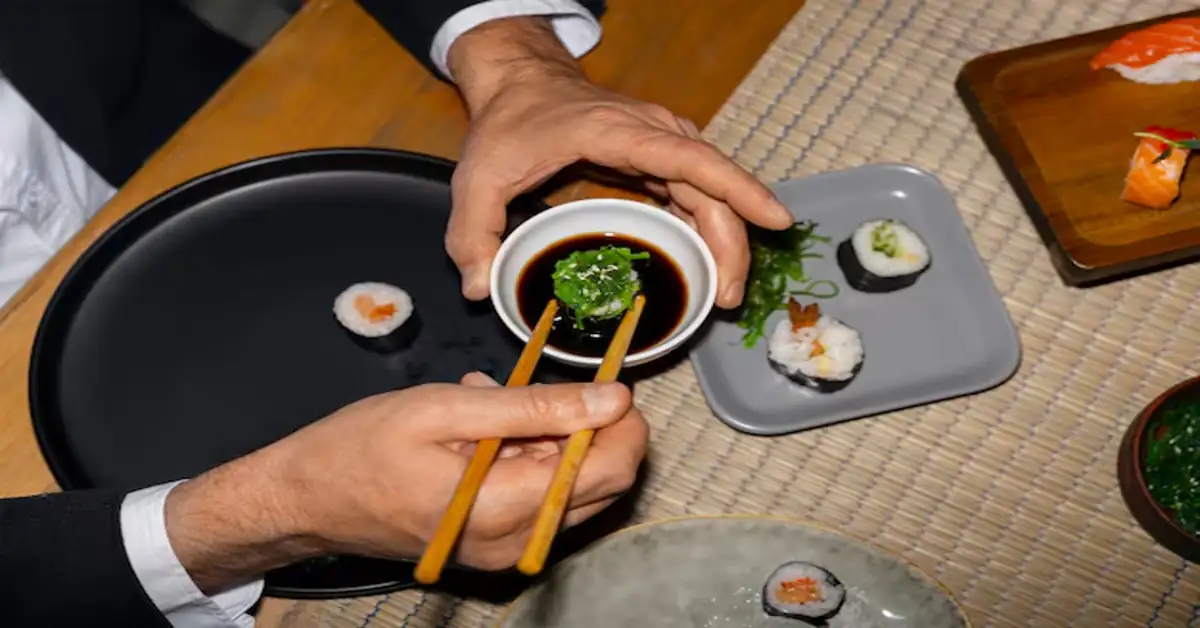Nigiri sushi is one of the most iconic and elegant forms of Japanese cuisine. Known for its minimalist presentation and delicate flavor balance, it continues to capture the hearts of sushi lovers across the globe. But what exactly is nigiri sushi, and why does it hold such a revered place in the world of food?
In this guide, we dive deep into everything you need to know about nigiri sushi—from its origins to how you can enjoy or even make it yourself.
What is Nigiri Sushi?
Nigiri sushi, or “nigirizushi” in Japanese, is a type of sushi made with a small hand-formed ball of vinegared rice topped with a thin slice of raw or cooked seafood. Sometimes, a strip of seaweed (nori) is used to hold the topping in place, especially for more delicate or slippery items like eel or octopus.
Core Features:
- Hand-pressed rice (shari)
- A slice of fish or seafood (neta)
- Often garnished with wasabi or thin nori
- Typically served in pairs
Nigiri is admired for its simplicity and the high quality of ingredients it requires.
Origins and History of Nigiri Sushi
The roots of nigiri sushi trace back to the Edo period in Japan (early 19th century). At the time, Tokyo (then known as Edo) was experiencing rapid urbanization. Street food vendors created a faster form of sushi by shaping vinegared rice by hand and topping it with fresh fish.
Timeline Highlights:
- 8th century: Fermented fish and rice introduced to Japan (narezushi)
- 17th century: Rice vinegar replaces fermentation (hayazushi)
- 1800s: Nigiri sushi emerges in Edo as fast food
- Modern day: Nigiri becomes a fine-dining staple worldwide
Nigiri sushi evolved from humble beginnings into a refined culinary art.
Key Ingredients of Nigiri Sushi
Quality is everything when it comes to nigiri. Each component must be fresh and expertly prepared.
Main Ingredients:
- Sushi Rice (Shari): Seasoned with rice vinegar, sugar, and salt
- Fish/Seafood (Neta): Tuna, salmon, eel, shrimp, etc.
- Wasabi: A dab between the rice and topping adds spice and balance
- Nori: Optional for structure and presentation
Optional Garnishes:
- Soy sauce (for dipping)
- Pickled ginger (palate cleanser)
- Sesame seeds or citrus zest (for flair)
The Art of Making Nigiri Sushi
Making nigiri sushi is deceptively simple but requires skill, practice, and precision.
Steps:
- Prepare and season the sushi rice
- Slice fish at the proper angle and thickness
- Wet hands to prevent rice from sticking
- Form a rice oval with gentle pressure
- Add a dab of wasabi
- Lay the fish slice over the rice and press gently
It may look easy, but chefs in Japan train for years to perfect this technique.
Popular Types of Nigiri Sushi
There are dozens of variations of nigiri sushi, each offering unique textures and flavors.
Common Varieties:
- Maguro (Tuna): Rich and meaty
- Sake (Salmon): Buttery and vibrant
- Ebi (Shrimp): Cooked and slightly sweet
- Unagi (Eel): Grilled and glazed
- Hamachi (Yellowtail): Mild and smooth
- Ika (Squid): Chewy with a clean finish
Nigiri can also feature egg (tamago), vegetables, or rare seasonal seafood.
Nigiri vs. Sashimi vs. Maki
Many people confuse different types of sushi, but each has distinct characteristics.
| Type | Description | Includes Rice? | Rolled? |
|---|---|---|---|
| Nigiri | Rice with fish on top | Yes | No |
| Sashimi | Just thinly sliced raw fish | No | No |
| Maki | Fish and rice rolled in seaweed | Yes | Yes |
Nigiri strikes a perfect balance between simplicity and substance.
How to Eat Nigiri Sushi Properly
There’s an etiquette to eating nigiri that enhances the experience.
Do:
- Eat in one bite if possible
- Dip the fish (not the rice) into soy sauce
- Use hands or chopsticks
- Cleanse your palate with ginger between bites
Don’t:
- Over-dip and break the rice
- Mix wasabi into your soy sauce
- Eat nigiri cold (room temperature is ideal)
Respecting these traditions adds depth to your dining experience.
Nutritional Value and Health Benefits
Nigiri sushi is not just delicious—it can be nutritious, too.
Nutritional Highlights:
- High in lean protein
- Low in saturated fats
- Contains omega-3 fatty acids (from fish)
- Moderate calories (40–80 per piece)
Health Tips:
- Opt for fish like tuna or salmon for heart health
- Watch sodium levels from soy sauce
- Choose brown sushi rice for added fiber (when available)
Nigiri Sushi in Japanese Culture
Nigiri sushi isn’t just food—it’s a cultural symbol. In Japan, it represents:
- Respect for craftsmanship
- Seasonal awareness (shun)
- Purity and balance
High-end sushi restaurants (called sushi-ya) offer omakase menus, where chefs serve seasonal nigiri piece by piece based on their expertise and the freshest ingredients
Nigiri Sushi Around the World
Nigiri has made its mark globally. From Tokyo to New York to São Paulo, chefs reinterpret nigiri while preserving its essence.
Global Trends:
- Fusion styles with truffle oil, jalapeños, or caviar
- Sustainable fish choices like Arctic char or albacore
- Deconstructed nigiri bowls for casual dining
While purists may prefer tradition, innovation keeps nigiri sushi exciting.
Tips for Making Nigiri at Home
With the right tools and fresh ingredients, you can enjoy nigiri sushi from your own kitchen.
What You’ll Need:
- Short-grain sushi rice
- High-quality sashimi-grade fish
- Rice vinegar, sugar, and salt
- Sharp knife and clean surface
Tips:
- Buy fish from a trusted source (look for “sushi-grade”)
- Practice rice forming with wet hands
- Start with simple toppings like shrimp or cooked eel
It may take time to perfect, but the effort is worth it.
Expert Insights and Chef Tips
“Nigiri is all about restraint. Let the fish and rice shine. Simplicity is the ultimate sophistication.”
— Chef Kenji Takahashi, Sushi Master
“Even after decades, I’m still learning from every piece of nigiri I make. It’s a never-ending journey.”
— Naomi Sato, Michelin-Starred Sushi Chef
Final Thoughts & Call to Action
Nigiri sushi is a timeless celebration of simplicity, technique, and tradition. Whether you’re enjoying it at a high-end restaurant or crafting it at home, the experience is both sensory and soulful. With just rice, fish, and a touch of wasabi, nigiri tells a story that spans centuries.
Frequently Asked Questions (FAQ)
What is the difference between nigiri and sushi?
Nigiri is a type of sushi. Specifically, it’s hand-formed rice topped with fish or seafood.
Can nigiri sushi be vegetarian?
Yes! You can use tamago (egg), avocado, or grilled vegetables as toppings.
Is it okay to eat nigiri with your hands?
Absolutely. In Japan, eating nigiri with your hands is traditional and acceptable.
How fresh should the fish be for nigiri?
Extremely fresh. Use only sashimi-grade fish from a reliable source.
Inspired to try or make nigiri sushi? Explore your local sushi spots, experiment at home, or share your favorite nigiri moments in the comments. Don’t forget to subscribe for more culinary deep dives!









